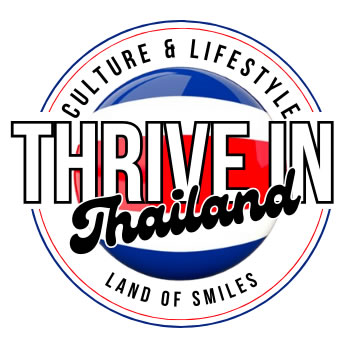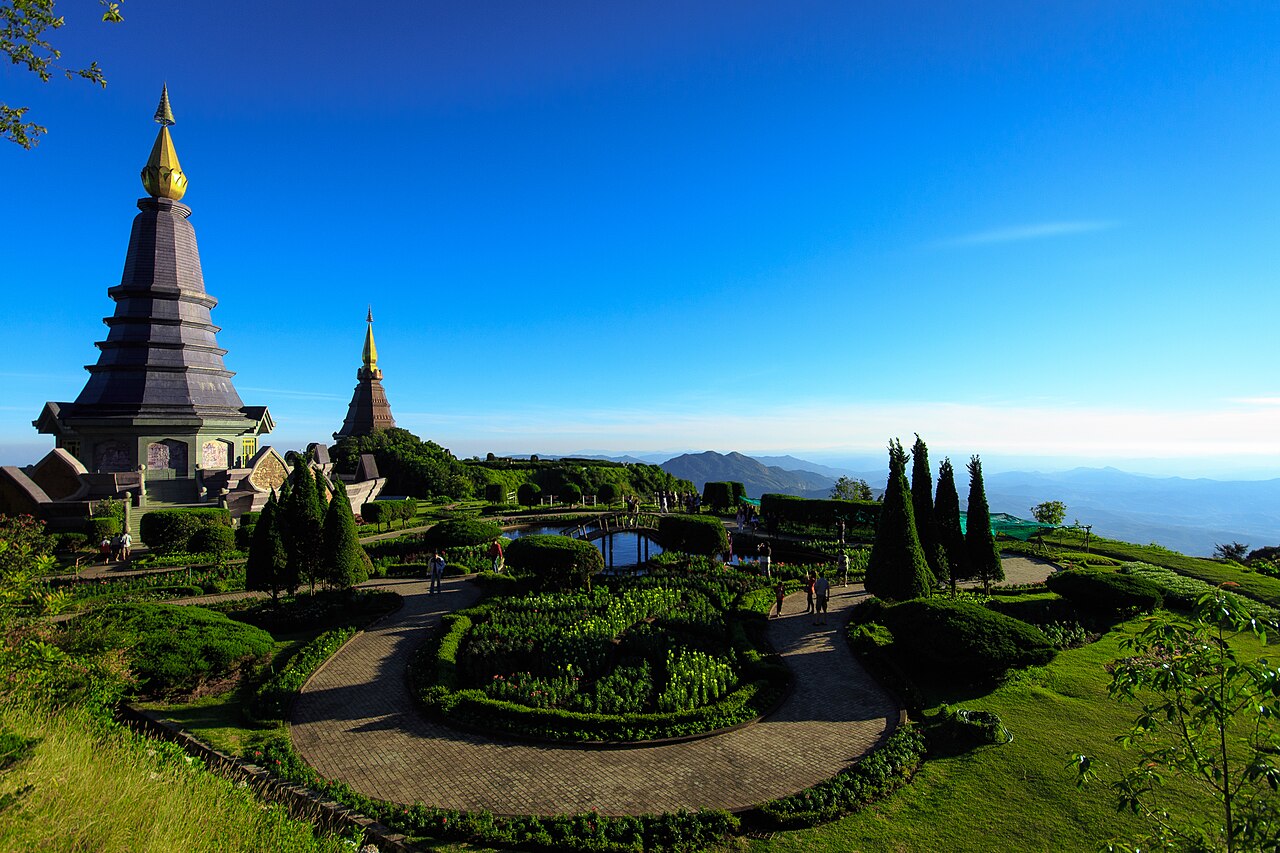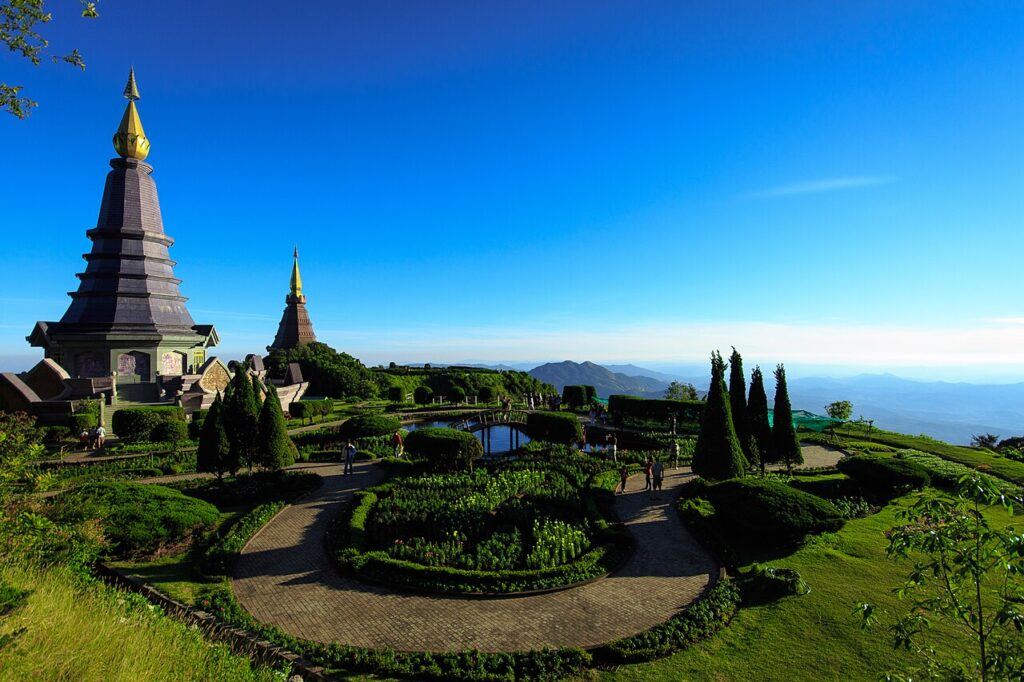
At 2,565 meters above sea level, Doi Inthanon National Park (อุทยานแห่งชาติดอยอินทนนท์) stands as the highest peak in Thailand—earning its famous title, “The Roof of Thailand.” Just two hours from Chiang Mai, this breathtaking park is where cool alpine breezes meet lush jungle, and where twin royal pagodas rise dramatically above the clouds.
Known to locals as the “Roof of Heaven,” Doi Inthanon offers something for every traveler. Photographers and hikers come for misty sunrise trails like Kew Mae Pan, while families enjoy easy-access waterfalls, flower gardens, and peaceful picnic spots. Whether you’re chasing crisp mountain air, birdwatching rare species, or simply escaping the city heat, this park is one of northern Thailand’s most unforgettable natural escapes.
Where Is Doi Inthanon National Park?
Doi Inthanon National Park is located in Chiang Mai Province in northern Thailand, about 100 kilometers southwest of Chiang Mai city. The park covers an area of more than 480 square kilometers, set within the Thanon Thong Chai Range, which is often described as a southern extension of the Himalayas.
Its central landmark is Doi Inthanon mountain, the highest peak in the country at 2,565 meters. The park’s landscapes range from tropical forests at lower altitudes to cool, misty cloud forests and pine groves near the summit. This mix of elevations creates rich biodiversity, making the park a hotspot for birdwatching and rare plant species.
For travelers, the park is an easy two-hour drive from Chiang Mai, making it one of the most popular day trips from the city. Many visitors combine a visit to the summit with stops at waterfalls, hill tribe markets, and the famous twin royal pagodas along the way.
Doi Inthanon on the Map
Want a clearer idea of where you’re headed? Doi Inthanon National Park lies in Chiang Mai Province, about 100 kilometers southwest of Chiang Mai city, with the main entrance near Chom Thong. It’s an easy 2-hour drive from the city, making it one of northern Thailand’s most popular day trips.
Click the image below to open the park’s location in Google Maps in a new tab.
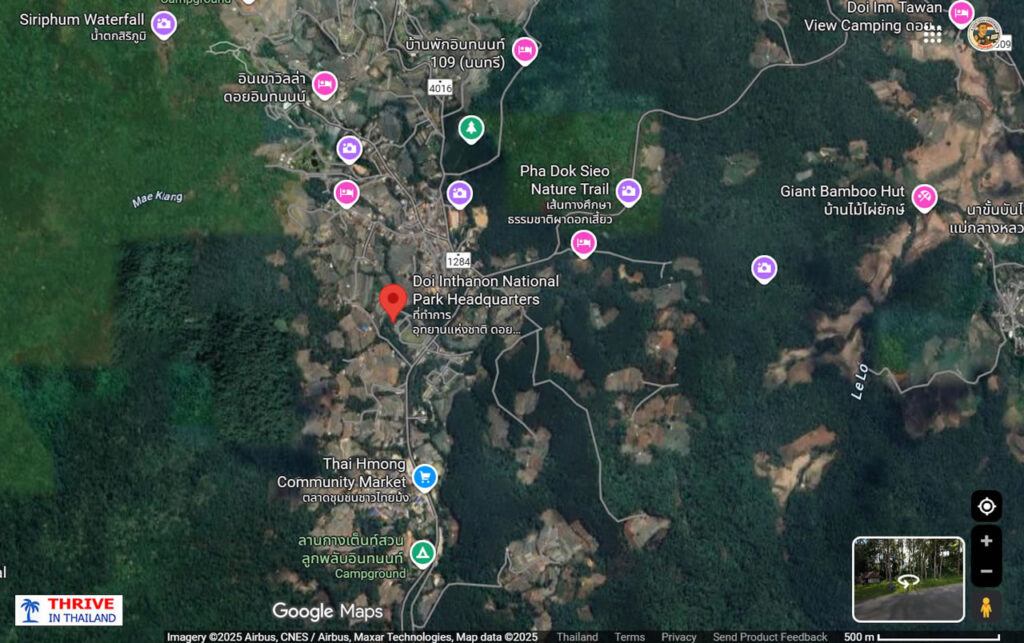
Best Time to Visit Doi Inthanon National Park
Because of its elevation, Doi Inthanon National Park stays cooler than much of Thailand year-round, with summit temperatures often 10–15°C lower than in Chiang Mai city. Still, the season you visit makes a big difference in what you’ll experience.
- Cool Season (November–February): The most popular time to visit. Crisp, clear mornings, comfortable daytime temperatures (10–20°C at higher elevations), and blooming flowers make it ideal for hiking and photography. Sunrise at Kew Mae Pan Trail is especially spectacular during these months.
- Hot Season (March–May): Warm but still cooler than the city. Waterfalls carry less water, but visibility is good and cherry blossoms (dok nang phaya sua khrong) often bloom between late January and February, depending on the year.
- Rainy Season (June–October): Expect mist, heavy rains, and trail closures. On the upside, waterfalls are at their most powerful, and the forests look lush and green. If you don’t mind getting wet, it’s a quieter time with fewer crowds.
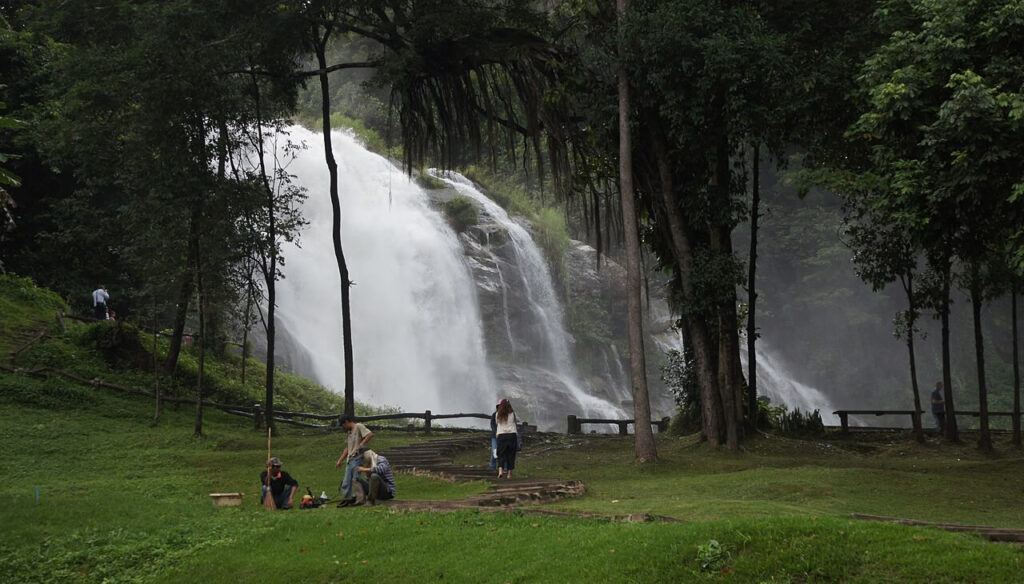
Photo by Z3144228 on Wikimedia Commons, licensed under CC BY-SA 4.0
📌 Even in the hot season, summit temperatures can drop to 5°C or lower at night during December–January. Pack a jacket or sweater, especially if you plan to catch the sunrise.
Not sure if it’s a good month to visit?
Use the Monsoon Weather Checker—choose a destination and month to see a clear Go / Iffy / Avoid signal from Thailand’s Meteorological Department climate averages (historical; no forecasts), plus typical rainfall, rainy days, temperature, and a one-line sea conditions note.
How to Get to Doi Inthanon National Park
The gateway to Doi Inthanon National Park is Chiang Mai city, located about 100 kilometers to the northeast. From the Old City or Nimmanhaemin, the drive takes around two hours by car via Route 108 toward Chom Thong and then Route 1009 into the park.
Travel Options from Chiang Mai
- Private Car or Rental: The easiest and most flexible option. Roads are well-paved, though steep in sections near the summit. Renting a car or motorbike allows you to stop at waterfalls, trails, and markets along the way.
- Group Tours: Many Chiang Mai tour operators run day trips to Doi Inthanon, typically including transport, entrance fees, a guide, and stops at the twin pagodas, waterfalls, and nature trails. Prices range from 1,200–2,500 THB per person depending on the itinerary.
- Public Transport: Limited and less convenient. You can take a bus or songthaew (shared red truck) from Chiang Mai to Chom Thong, then hire another songthaew to the park entrance. This is cheaper but takes more time and coordination.
From Other Cities
- Bangkok: Flights to Chiang Mai take just over an hour. From there, continue by rental car, private transfer, or a day tour.
- Pai, Mae Hong Son, or Lampang: Expect longer travel times (4–6 hours by car) and plan to overnight in Chiang Mai before heading to the park.
📌 The park opens at 5:30 a.m. If you’re aiming for sunrise at the summit or on Kew Mae Pan Trail, consider staying overnight in Chom Thong or at a lodge near the park entrance to avoid the early morning drive from Chiang Mai.
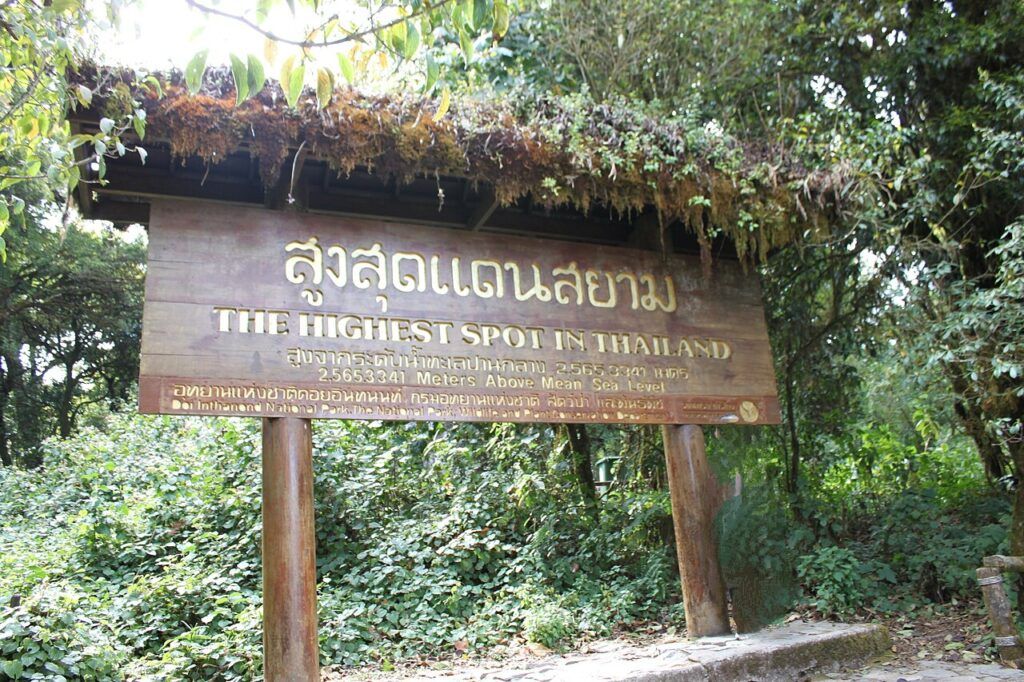
Photo by Avisadehh on Wikimedia Commons, licensed under CC BY-SA 4.0
Travel Options to Doi Inthanon National Park
| Option | Details | Typical Cost |
|---|---|---|
| Private Car / Rental | ~2-hour drive from Chiang Mai via Route 108 → 1009; most flexible for stopping at waterfalls, pagodas, and trailheads | 800–1,200 THB/day (car) + fuel |
| Motorbike | Steep sections and cooler temps near the summit; best for experienced riders—use low gears on descents | 250–400 THB/day + fuel |
| Group Tours | Day trips with transport & guide; typical stops include twin pagodas, waterfalls, and a short nature trail | 1,200–2,500 THB/person |
| Public Transport | Bus/songthaew to Chom Thong, then hire a songthaew to the park entrance; slowest but cheapest | 100–200 THB each way |
Getting Around Doi Inthanon National Park
Distances inside Doi Inthanon National Park are long and the terrain is hilly, so plan your route before you enter. Most visitors get around by car or on a guided tour, then walk short trails at each stop.
Main ways to move between sights
- Self-drive (car): Easiest and most flexible. Parking areas at Wachirathan, Siriphum, Mae Ya, the twin pagodas, and the summit boardwalk.
- Self-ride (motorbike): Only for confident riders. Use low gears on descents. Expect cooler temps, wet patches, and fog.
- Guided day tour/van: Hassle-free transport with a set route that typically includes waterfalls, the twin pagodas, a short nature trail, and a market stop.
- Songthaew hire inside the park: Possible from the entrance or Chom Thong for point-to-point transfers if you arrive by public transport.
On foot & trails
- Short boardwalks and paved paths at the summit, twin pagodas, and some waterfalls are family-friendly.
- Popular hikes like Kew Mae Pan Nature Trail require a local guide hired at the trailhead. Trail openings are seasonal and weather dependent.
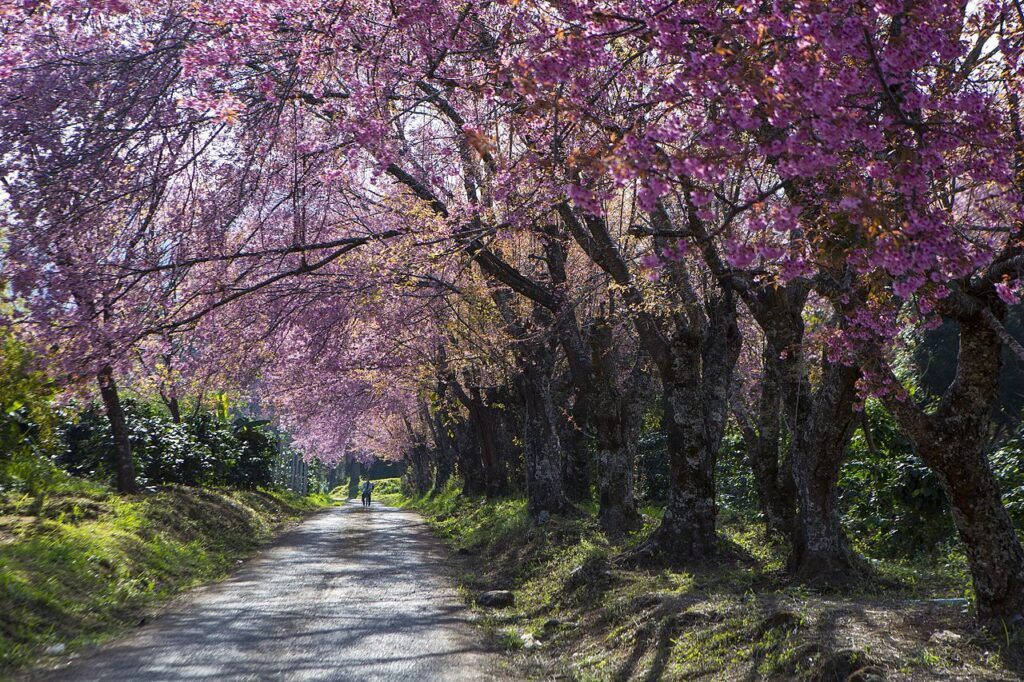
Photo by Sirapa Atikomchakorn on Wikimedia Commons, licensed under CC BY-SA 4.0
Road & safety tips
- Roads are paved but steep and winding. Use engine braking on descents.
- Fog and slick surfaces are common, especially early morning and in the rainy season.
- Mobile signal is patchy. Carry cash for fees, markets, and guides.
- Temperatures near the summit can be 10–15°C cooler than in Chiang Mai. Bring a light jacket year-round.
Logistics
- Fuel up in Chom Thong before you enter. There are no full service stations deep inside the park.
- Park staff and rangers are stationed at major sites. Basic first aid is available; the nearest full hospital is in Chom Thong.
Quick Compare: Getting Around
| Mode | Best For | Notes |
|---|---|---|
| Self-drive (Car) | Flexible, full loop: waterfalls → pagodas → summit | Paved but steep; use low gears downhill |
| Self-ride (Motorbike) | Experienced riders who want scenic freedom | Fog, wet patches; jacket and gloves recommended |
| Guided Tour/Van | Easy, no driving; curated highlights in one day | Fixed itinerary; limited time at each stop |
| Songthaew Hire | Public-transport arrivals needing point-to-point rides | Negotiate fares; slower than private transport |
| Walking/Trails | Short boardwalks and signed paths at key sights | Some trails require a local guide (e.g., Kew Mae Pan) |
Top Things to Do in Doi Inthanon National Park
From cloud-forest boardwalks to thunderous waterfalls and sunrise ridgelines, Doi Inthanon National Park packs a lot into one day. Here are the must-see stops and how to fit them together.
1) Summit & Ang Ka Nature Trail (2,565 m)
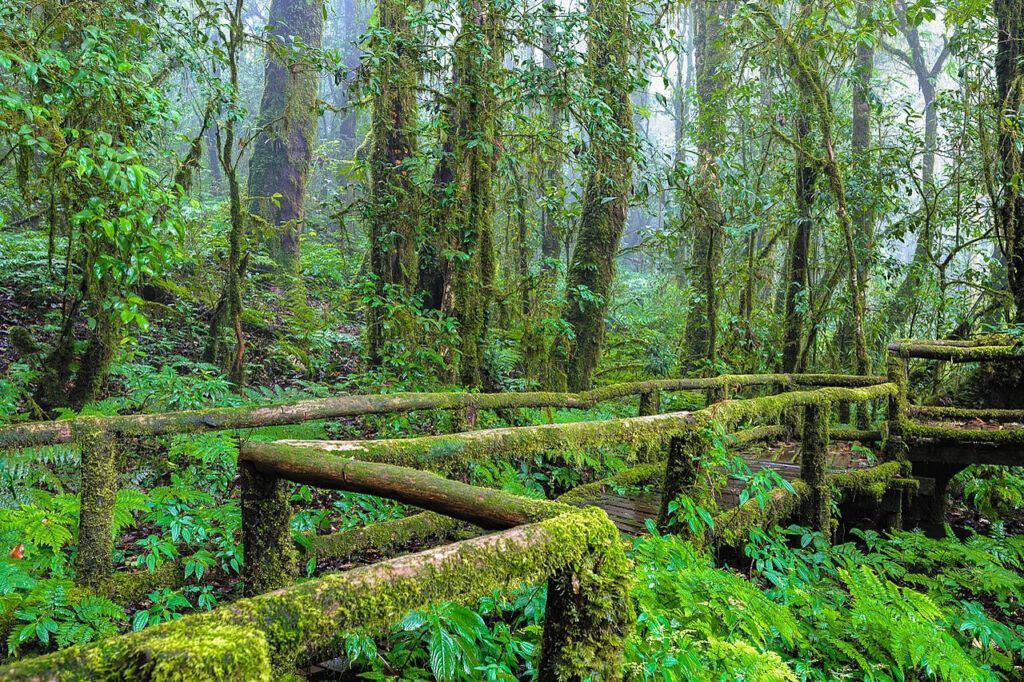
Photo by BerryJ on Wikimedia Commons, licensed under CC BY-SA 4.0
Walk the short boardwalk loop through mossy cloud forest at Thailand’s highest point. Cooler temps, orchids, ferns, and interpretive signs make this a gentle, magical stop.
Time: 30–45 minutes (boardwalk) • Difficulty: Easy • Tip: Wear a light jacket—even mid-day can be brisk.
2) Kew Mae Pan Nature Trail (Iconic Sunrise Ridge)
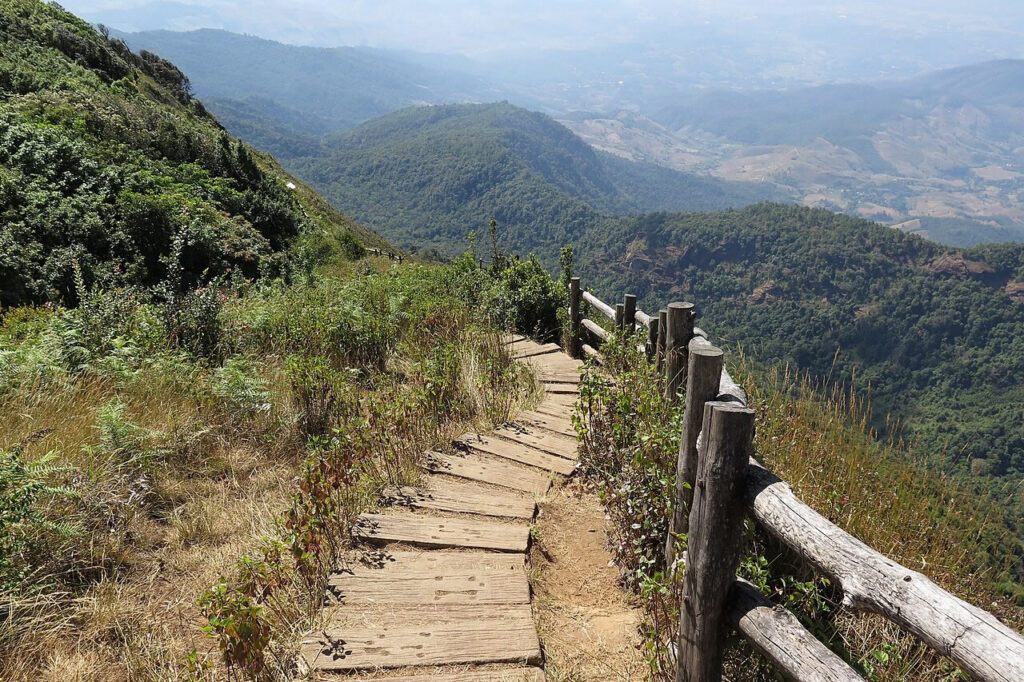
Photo by Douglas Perkins on Wikimedia Commons, licensed under CC BY-SA 4.0
The park’s most famous sunrise walk along a ridge above the clouds with sweeping valley views. A local guide is required and arranged at the trailhead.
Season: Typically open Nov–May (weather dependent) • Time: 2–3 hours round-trip • Difficulty: Moderate • Tip: Arrive before dawn; bring cash for guide fee.
3) Twin Royal Pagodas (King & Queen Pagodas)
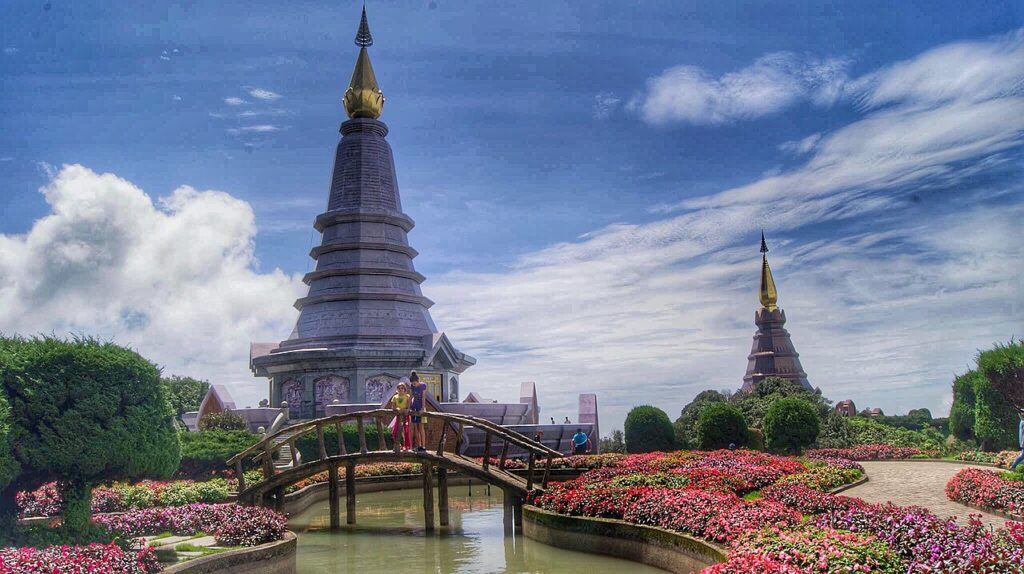
Photo by ElliotJW on Wikimedia Commons, licensed under CC BY-SA 4.0
The photogenic Naphamethinidon and Naphaphonphumisiri pagodas sit on a high saddle with manicured gardens and panoramic viewpoints.
Extra Fee: Small pagoda shuttle/entry fee applies • Time: 45–60 minutes • Tip: Go morning for softer light and fewer crowds.
4) Wachirathan Waterfall (Power & Spray)
A wide, roaring cascade just off the main road—great for photos and a leg stretch.
Time: 20–30 minutes • Tip: Expect mist; protect camera gear. Combine with Sirithan (nearby) if time allows.
5) Mae Ya Waterfall (Grandeur & Layers)
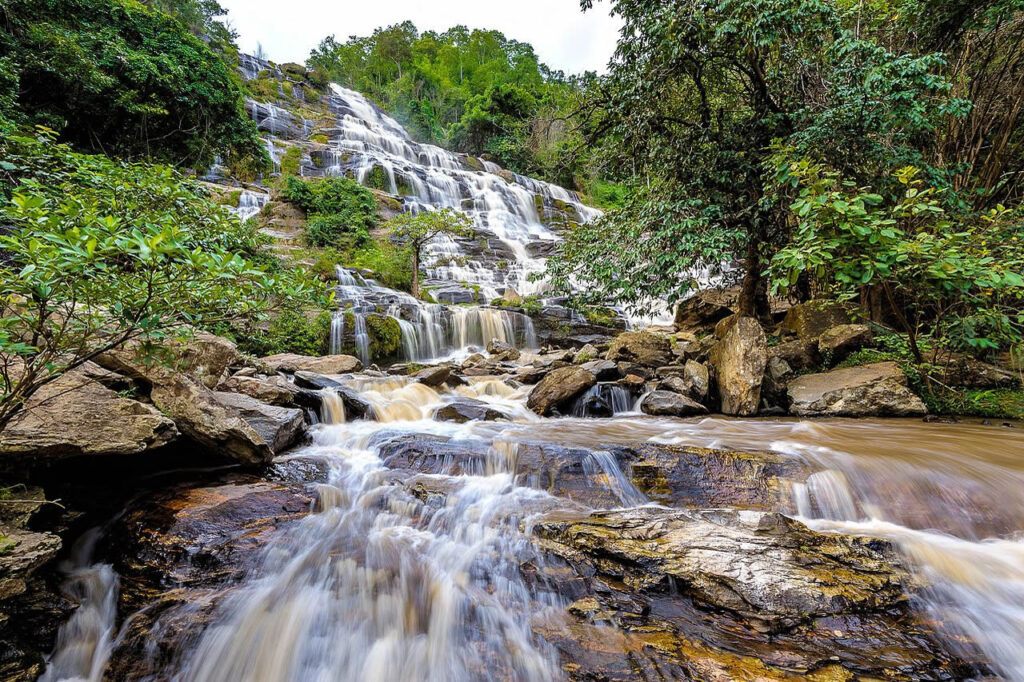
Photo by BerryJ on Wikimedia Commons, licensed under CC BY-SA 4.0
Often called one of Thailand’s most beautiful falls, Mae Ya fans over a broad rock face in multiple tiers.
Time: 45–60 minutes • Tip: Located a bit off the main loop—visit first or last if you’re self-driving.
6) Siriphum & Sirithan Waterfalls (Quick Scenic Stops)
Two photogenic stops that break up the drive. Siriphum has seasonal flower plots; Sirithan offers a classic plunge view.
Time: 15–25 minutes each • Tip: Good “backup” if your day is tight.
7) Royal Agricultural Station Inthanon (Cool-Climate Gardens)
Stroll flower gardens, greenhouses, and research plots showcasing highland crops and blooms.
Time: 45–90 minutes • Tip: Nice midday stop when trails are busier.
8) Birdwatching (Nov–Mar Peak)
Over 360 species make Inthanon Thailand’s premier highland birding site. The summit boardwalk and mid-elevation forest edges are hotspots.
Time: Flexible • Tip: Early morning is best; bring binoculars and a light layer.
9) Hmong Market & Local Coffee
Sample mountain coffee, honey, fruit, and handicrafts at small hill-tribe markets near major sights (including by the pagodas).
Time: 15–30 minutes • Tip: Carry small bills; try locally roasted arabica.
10) Sunrise & “Sea of Mist” Viewpoints
On clear cool-season mornings, ridges can float above a sea of fog. Best seen around Kew Mae Pan area and summit viewpoints.
Time: Dawn • Tip: Check gate times and plan fuel/food the night before.
11) Camping & Stargazing (For Slow Travelers)
Simple campgrounds and basic lodges exist in/near the park (book via the National Park system).
Tip: Nights can drop below 5–10°C in Dec–Jan—pack proper layers and a warm sleeping bag.
📌 Suggested One-Day Loop (self-drive or private tour)
Mae Ya → Wachirathan → Sirithan → Twin Pagodas → Kew Mae Pan (late morning/early afternoon if not sunrise) → Summit & Ang Ka boardwalk → Hmong market → Chiang Mai.
If you’re chasing sunrise at Kew Mae Pan, start there, then continue to the pagodas → summit → waterfalls on the way down.
Where & What to Eat in Doi Inthanon National Park
Unlike Thailand’s islands or big cities, dining in Doi Inthanon National Park is simple, local, and tied closely to the surrounding communities. Don’t expect fancy restaurants—here it’s all about hearty mountain food, hill-tribe markets, and quick meals between waterfall stops.
Local Food Inside the Park
- Park Cafeterias & Food Stalls: Around popular spots like Wachirathan Waterfall and the twin pagodas you’ll find small eateries selling basic Thai dishes such as pad krapao, fried rice, and noodle soups. Meals usually cost 60–120 THB.
- Hmong Market (near the pagodas): Great place to try fresh produce, grilled meats, wild honey, and locally grown coffee beans. Seasonal fruits like strawberries and persimmons are highlights in the cool season.
Eating Nearby
- Chom Thong Town (at the park entrance): If you want more choice, the small town of Chom Thong has sit-down restaurants, noodle shops, and cafés. Popular dishes include northern-style khao soi and laab.
- Chiang Mai Base: Many visitors eat in Chiang Mai before or after their trip, since the city has endless options, from night markets to high-end Thai restaurants.
Coffee & Mountain Produce
Doi Inthanon is part of northern Thailand’s coffee belt, so don’t miss a cup of locally roasted arabica. Small roadside stands and markets sell brewed cups and bags of beans to take home.
📌 Food options thin out after mid-afternoon inside the park. If you’re planning a long day or sunset at the summit, bring snacks or eat in Chom Thong before driving up.
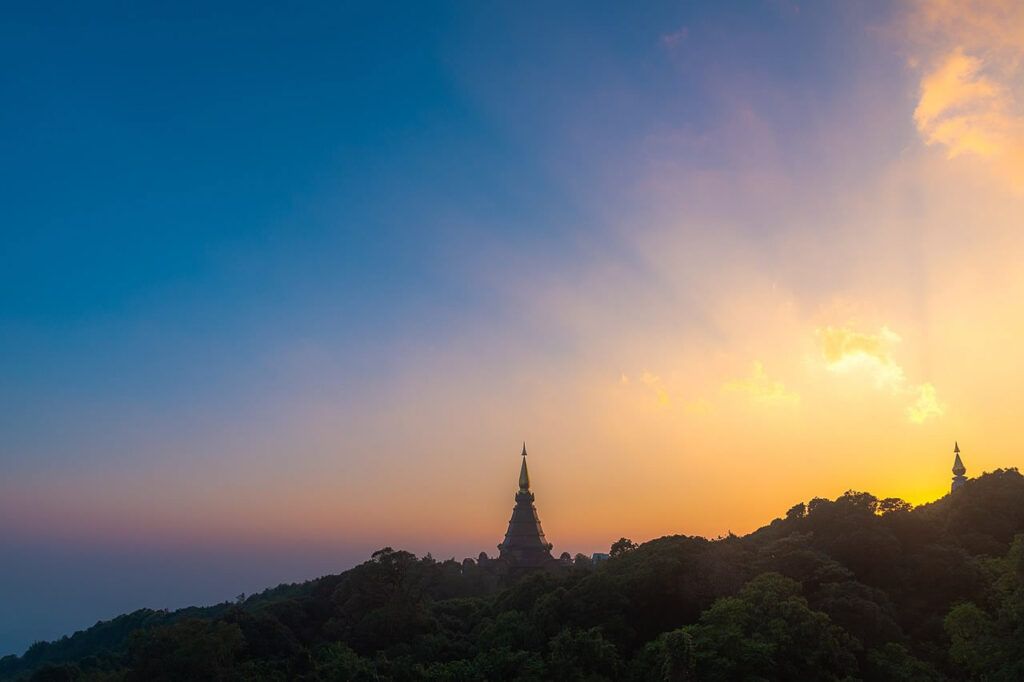
Photo by Samfotograf on Wikimedia Commons, licensed under CC BY-SA 4.0
Recommended Places to Eat Around Doi Inthanon
| Venue | What to Expect | Price Range (THB) |
|---|---|---|
| Hmong Market (near Pagodas) | Fresh fruit, local honey, grilled meats, mountain coffee beans | 40–100 |
| Wachirathan Waterfall Stalls | Quick Thai dishes (fried rice, noodles, pad krapao) and snacks | 60–120 |
| Royal Agricultural Station Café | Coffee, bakery items, and light meals with a garden view | 70–150 |
| Khao Soi Lumduan (Chom Thong) | Northern-style khao soi and noodle dishes, popular with locals | 50–90 |
| Café Amazon (Chom Thong) | Chain café for coffee, snacks, and a clean rest stop before/after your trip | 60–120 |
Where to Stay Near Doi Inthanon National Park
Accommodation around Doi Inthanon falls into three main areas:
- Inside or near the park: Best if you want to catch sunrise at Kew Mae Pan or the summit without the early drive. Choices are limited to park lodges, campgrounds, and a few rustic eco-resorts.
- Chom Thong town: The practical gateway at the park entrance, with mid-range resorts and budget guesthouses. You’ll also find fuel, ATMs, and food options here.
- Mae Chaem side: A quieter, scenic valley on the far side of the mountain—good if you’re looping toward Mae Hong Son or prefer a rural setting.
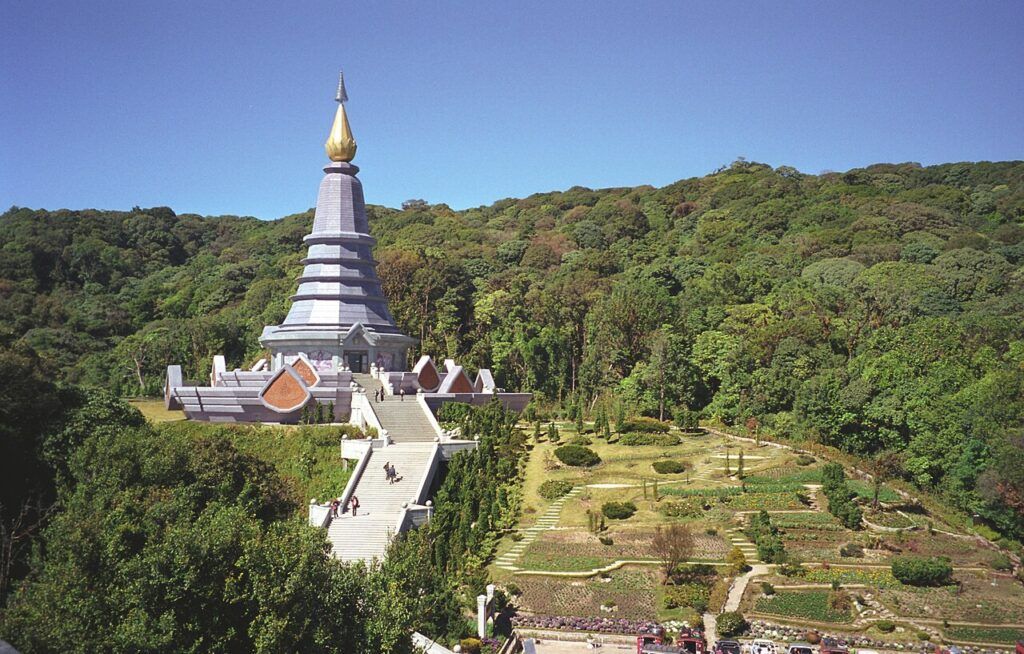
Photo by Grossbildjaeger on Wikimedia Commons, licensed under CC BY-SA 3.0
Below are some real examples with price ranges to help you compare at a glance:
| Accommodation & Location | Best For | Price Range (THB) |
|---|---|---|
|
National Park Lodges (cabins & bungalows)
Inside Park
|
Sunrise starts and early hikes with minimal driving; simple, no-frills rooms | 600–1,500 |
|
Camping Areas
Inside Park (HQ & summit zones)
|
Budget-friendly stays close to nature; tent & mat rentals available on-site | 200–600 |
|
Doi Inthanon View Resort
Near Park (Route 1009)
|
Rustic mountain lodge with easy access to trailheads and viewpoints | 1,200–2,000 |
|
Inthanon Riverside Resort
Chom Thong
|
Comfortable base with pool and quick access to the park entrance | 1,200–1,800 |
|
Sandee Place Chomthong
Chom Thong
|
Budget rooms with AC, WiFi, and private parking; practical and simple | 600–900 |
|
Khuang Na Farmview
Chom Thong
|
Rustic boutique stay with rice-field and mountain views, ~10 min to entrance | 1,000–1,500 |
|
Phu Chaem House
Mae Chaem
|
Quiet homestay-style option in a scenic valley—great for loop itineraries | 700–1,000 |
|
Touch Star Resort
Mae Chaem
|
Well-known resort with mountain views; comfortable for slow travel | 1,200–2,000 |
Shopping & Local Markets in Doi Inthanon National Park
Shopping here is small-scale and local—think hill-tribe produce, coffee beans, honey, and handicrafts. The best browsing is around the twin pagodas and along Route 1009, plus Chom Thong town at the park entrance.
What to look for
- Locally grown coffee (arabica beans), wild honey, macadamias, strawberries/persimmons in the cool season.
- Hmong & Karen handicrafts: hand-woven scarves, embroidered pouches, wooden spoons, bamboo baskets.
- Seeds/seedlings & dried fruit near the Royal Agricultural Station Inthanon.
Tips
- Bring cash (small bills). Mobile signal is patchy.
- Prices are usually marked; light bargaining is fine at markets, not at cafés/official shops.
- Check produce seasonality (fruit quality peaks Nov–Feb).
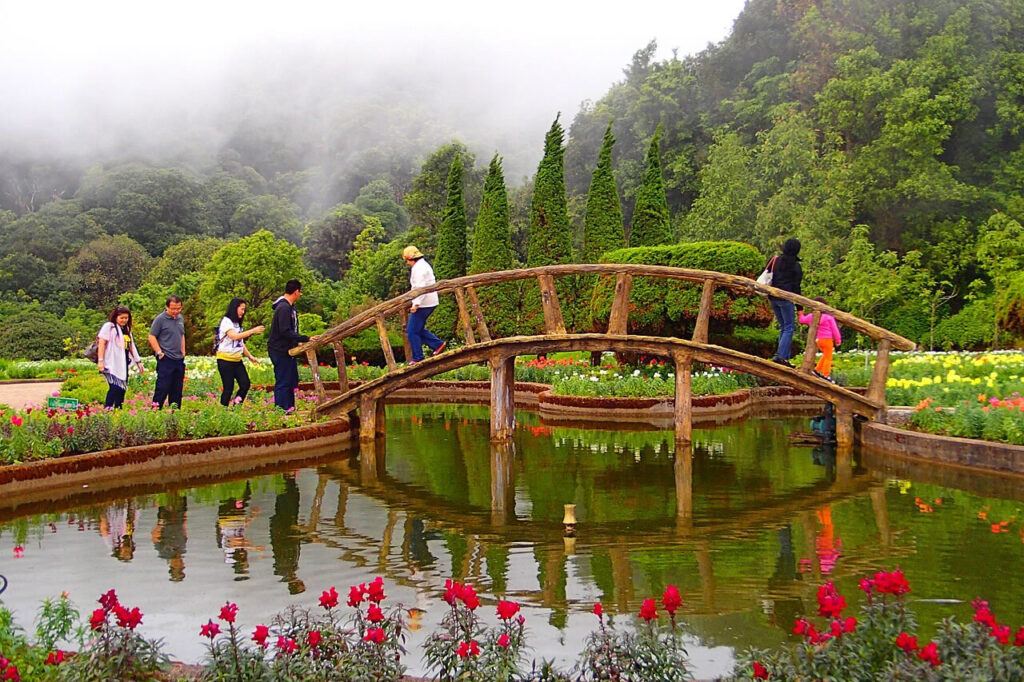
Photo by Morgan Miller on Wikimedia Commons, licensed under CC BY-SA 3.0
Recommended Markets & Shops (Quick Compare)
| Market / Shop | What to Buy | Typical Price (THB) | Notes |
|---|---|---|---|
| Hmong Market (near Twin Pagodas) | Arabica coffee beans, wild honey, macadamias, woven pouches | Coffee 120–250/200g • Honey 150–300/jar | Best selection mid-morning; bring small bills |
| Royal Agricultural Station Shop | Dried fruit, teas, seedlings, seasonal produce, souvenir packs | Dried fruit 60–120 • Tea 80–180 | Fixed prices; quality-controlled products |
| Roadside Farm Stands (Route 1009) | Seasonal fruit (strawberries, persimmons), roasted nuts, coffee | Fruit 40–120/box • Nuts 80–150/pack | Freshest Nov–Feb; ask to taste first |
| Chom Thong Morning Market | Spices, dried chilies, sticky rice baskets, everyday snacks | Baskets 80–180 • Spices 20–60/pack | Go early (6:00–9:00); easy parking nearby |
| Mae Chaem Handicraft Stalls | Hand-woven scarves, cotton wraps, wooden utensils | Scarves 150–350 • Spoons 30–60 | Good add-on if overnighting Mae Chaem |
Nearby Attractions & Itineraries
Doi Inthanon is often the destination itself, but if you want to make the most of your trip, here are nearby highlights and sample itineraries to plan around your visit.
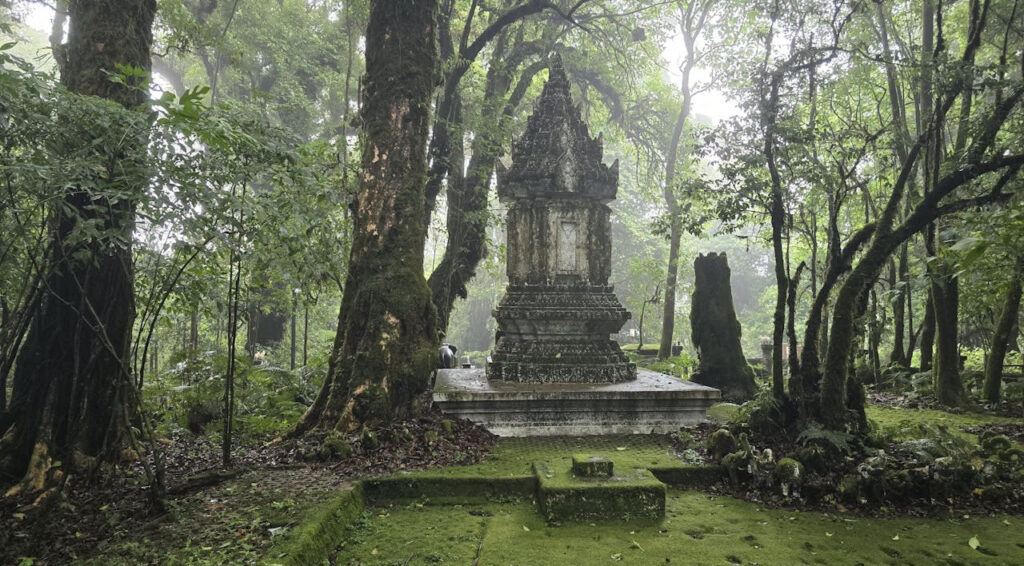
| Option | Details | Notes |
|---|---|---|
| Wat Phra That Si Chom Thong | Historic Lanna temple at the park gateway; major pilgrimage site with relic of the Buddha | 20 min from park entrance |
| Ob Luang National Park | Dramatic river gorge and viewpoint trails; great add-on for those looping south | ~1 hr from Chom Thong |
| Mae Chaem Valley | Peaceful farming town on the far side of the mountain; known for weaving and rural stays | 1 hr beyond summit road |
| Classic 1-Day Loop | Mae Ya → Wachirathan → Twin Pagodas → Summit & Ang Ka Trail → Hmong Market → return to Chiang Mai | Most popular plan |
| 2-Day Slow Travel | Stay overnight in Mae Chaem or Chom Thong; add Ob Luang gorge, weaving villages, and coffee stops | For relaxed pacing |
📌 If you’re short on time, the 1-day loop covers the essentials. For travelers who prefer slower rhythms and rural culture, extend into Mae Chaem or Ob Luang for a deeper northern Thailand experience.
Cost Snapshot: Doi Inthanon National Park
Visiting Doi Inthanon is fairly affordable, though costs depend on whether you self-drive, join a tour, or stay overnight nearby. Here’s a quick breakdown of typical expenses:
| Item | Where / What | Typical Price (THB) |
|---|---|---|
| Park Entrance Fee | Foreign adult 300, child 150; Thai adult 60, child 30; vehicle fee extra | 300–500 |
| Local Meals | Canteens & food stalls at waterfalls/pagodas | 60–120 |
| Coffee / Snacks | Hill-tribe market & roadside cafés | 40–100 |
| Transport (Car Rental) | ~2-hour drive from Chiang Mai; flexible stops | 800–1,200 / day |
| Guided Group Tour | Day trip incl. transport, guide, stops | 1,200–2,500 / person |
| Accommodation | Guesthouses & lodges in Chom Thong or Mae Chaem | 600–1,800 / night |
| Camping | Inside the park; tent rental available | 200–600 / night |
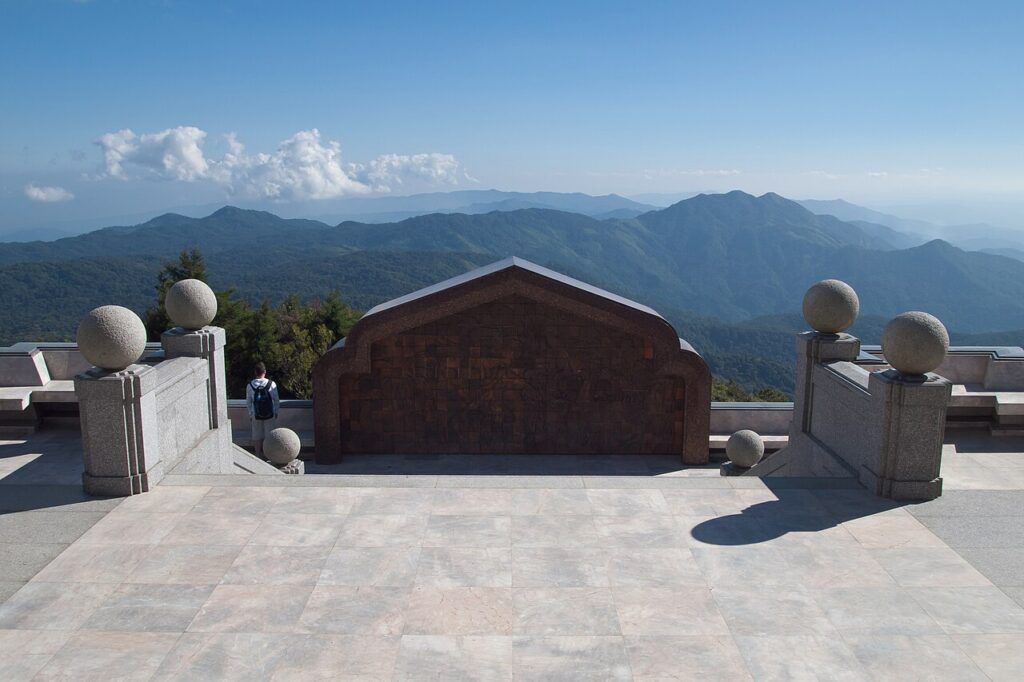
Photo by Vyacheslav Argenberg on Wikimedia Commons, licensed under CC BY-SA 4.0
Daily Budgets:
- Backpacker: 800–1,200 THB/day — songthaew/public transport or shared ride; 2 simple meals (60–120 THB each); coffee/snacks (40–100 THB); camping (200–600 THB) or budget room (600–900 THB). Park entry extra.
- Mid-range: 2,000–3,500 THB/day — car rental (800–1,200 THB) + fuel; local meals and coffee; lodge/guesthouse in Chom Thong or Mae Chaem (1,000–1,800 THB); small extras (shuttles/fees). Park entry extra.
- Comfort/Guided: 4,000–6,500+ THB/day — guided day tour (1,200–2,500 THB pp) or private driver; nicer lodge (1,500–2,500 THB); meals, coffee, souvenirs. Park entry extra.
📌 Estimates exclude flights to/from Chiang Mai and assume 1 day in the park; accommodation applies if you overnight near the park.
Want a realistic Thailand trip budget?
Use the Thailand Travel Cost Calculator — just enter your destinations, trip length, and travel style to get instant, accurate per-person and group trip costs in both THB and USD.
📌 Want a deeper breakdown of what things cost across Thailand by region and style?
Read the full Cost of Travel in Thailand guide.
Family-Friendliness
Why it works for families
- Short, safe boardwalks at the Summit (Ang Ka) and around the Twin Royal Pagodas.
- Big, dramatic waterfalls (Wachirathan, Sirithan) with parking close by.
- Cooler temps than the city; plenty of shade and picnic spots.
Good to know
- Roads are steep and winding—use car seats/boosters and engine braking.
- Bring layers; summit can be 10–15°C cooler than Chiang Mai.
- Limited restaurants inside; pack snacks/water, plan lunch early.
- Strollers are fine on paved areas (pagodas, some viewpoints), not on forest trails.
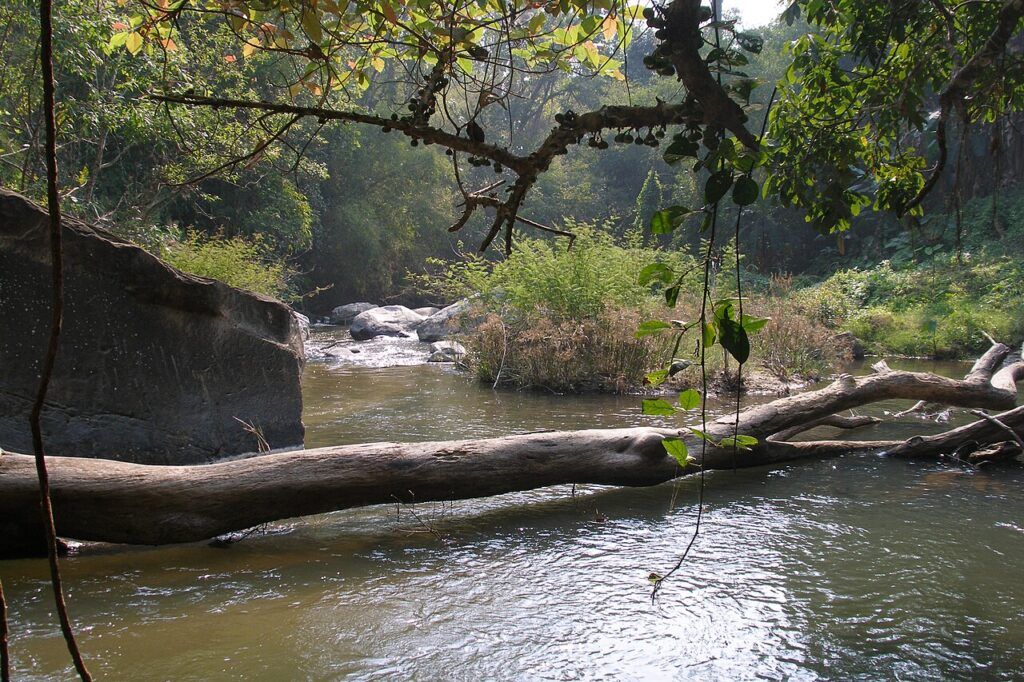
Photo by Vyacheslav Argenberg on Wikimedia Commons, licensed under CC BY-SA 4.0
Kid-Friendly Highlights (Quick Compare)
| Spot / Activity | Why Families Like It | Time / Notes |
|---|---|---|
| Summit & Ang Ka Boardwalk | Short loop in mossy “cloud forest”; cool, shaded, lots to see | 30–45 min • Jacket recommended |
| Twin Royal Pagodas | Gardens, viewpoints, easy paths; stroller-friendly areas | 45–60 min • Small shuttle fee |
| Wachirathan Waterfall | Big “wow” factor close to parking; photo platforms | 20–30 min • Misty spray |
| Royal Agricultural Station | Flowers, greenhouses; calm paths good for younger kids | 45–90 min • Café & restrooms |
| Hmong Market | Snacks, fruit, local treats; easy cultural stop | 15–30 min • Cash only |
Family logistics
- Best base: Stay inside/near the park or in Chom Thong to avoid a pre-dawn city drive.
- Facilities: Restrooms at major sights; baby-changing not guaranteed.
- Safety: Keep kids behind barriers at waterfalls; watch for slippery paths after rain.
Local Services & Emergency Info (Doi Inthanon & Chom Thong)
If you need help in or around Doi Inthanon National Park, these are the most useful numbers and nearby services.
| Service | Details | Contact |
|---|---|---|
| Emergency (Police/Fire/Ambulance) | Nationwide emergency line. Ask for English if needed. | 191 (general) • 1669 (medical) • 199 (fire) |
| Tourist Police (24/7) | English-speaking assistance for visitors; coordination with local police. | 1155 |
| Doi Inthanon National Park HQ | Official park contact (rangers, closures, lost & found). | +66 53 286 728 / 729 |
| Nearest Hospital (Chom Thong Hospital) | 259 Moo 2, Doi Kaeo, Chom Thong, Chiang Mai 50160. Public hospital with ER. | +66 53 341 521 • +66 53 341 218-9 |
| Pharmacies | Multiple small pharmacies in Chom Thong town along Route 108. Carry cash. | Search “Pharmacy” in Chom Thong |
| Post Office (Chom Thong) | 1 M.2, Chiang Mai–Mae Hong Son Hwy (108), Doi Kaeo, Chom Thong. Mon–Fri 08:30–16:30; Sat 09:00–12:00. | +66 53 341 260 |
| Immigration (Chiang Mai) | Main office near Airport Plaza (extensions, overstay, etc.). Check hours before visiting. | +66 53 201 755 |
FAQs: Doi Inthanon National Park
Here are quick answers to common questions not covered above to help you plan your visit.
📌 Are drones allowed in the park?
Generally no—flying a drone in Thai national parks requires advance permission from authorities, and ad-hoc recreational flights are typically prohibited. If you have a legitimate need, apply for permits well before your visit.
📌 Can I swim at the waterfalls?
Not at the major falls. Safety barriers and signs are there for a reason—strong currents, slick rocks, and sudden surges make swimming dangerous. Stick to viewing platforms and marked paths.
📌 Do I need a 4×4 to reach the summit?
No. Roads are paved all the way; they’re just steep and winding. Use low gears on descents and be extra cautious in fog or after rain.
📌 Is there mobile signal or ATMs inside the park?
Signal is patchy and can drop out at higher elevations. There are no ATMs inside the park—withdraw cash and stock up in Chom Thong before you enter.
📌 Can I bring pets?
No—pets are not allowed in Thai national parks to protect wildlife and ecosystems.
📌 What license do I need to ride a motorbike here?
A valid motorcycle license (not just a car license) is required; visitors should carry the appropriate home-country license plus an International Driving Permit. Police checks do occur, and accidents without proper licensing can complicate insurance.
Related Guides & Further Reading
Travel in Thailand is easier when you have the right balance of practical advice and destination inspiration. Below you’ll find useful travel resources to help you prepare smoothly, plus nearby destinations worth adding to your journey.
Thailand Travel Essentials: Plan Smarter, Travel Easier
Need tips on visas, health, culture, or everyday logistics? My hub brings all the key guides together in one place: Explore the Thailand Travel Guide
Your Next Thai Adventure Awaits
Looking for where to go next? These nearby or complementary places pair well with your current destination and are worth your time in the Land of Smiles.
- Chiang Rai Travel Guide: Best Temples & Nature, Where to Stay & How to Get There
- Phu Chi Fa – Sunrise Above the Clouds in Chiang Rai
💬 Join the conversation—your questions and on-the-ground tips make this guide better.
